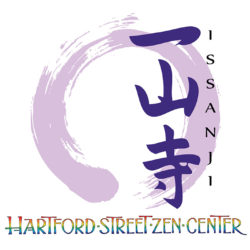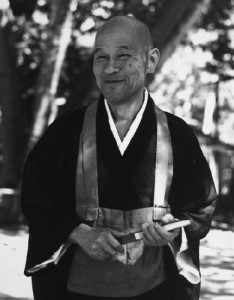Zen evolved from the teachings of the historical Buddha who lived 2500 years ago in Northern India. These teachings spread to China some six hundred years later. Zen (called Ch’an in China) developed in Mahayana (one of three branches of Buddhism) Buddhist monasteries in the 7th Century. Ch’an in China traces its roots to the Indian practice of Dhyana (“meditation”). Inspired in part by the Chinese practice of the Tao, Ch’an was characterized by a spontaneity and naturalness. Japan periodically sent Buddhist monks to study different schools of Chinese Buddhism. In the 12th Century two monks, Myoan Eisai and Eihei Dōgen, separately brought what they then called Ch’an = Zen, Buddhism west to Japan. Dōgen returned to Japan to transmit the lineage of the Sōtō Zen Buddhism, but also trained in another school as well. Introduced in North America after the Second World War, it has flourished, and Sōtō Zen centers and sitting groups are active in most major cities.
What is Sōtō Zen? Sōtō Zen was developed in the ninth century by the Chinese Monks Sozan (Ch. Caoshan) and Tozan (Ch. Dongshan). The first syllables of their Japanese names making up the subsequent name of the Japanese school Sōtō. Similarly the first parts of their Chinese name making up the Chinese school’s name Caodong. It stressed doing meditation without a goal. Seated, silent meditation is an expression of this. In China and Japan in the earlier years, there were multiple other schools of Zen Buddhism. Today most sources currently recognize three existing schools of Zen Buddhism in Japan today.
Sōtō Zen Buddhism is distinguished by its focus on the down-to-earth practice of “everyday zen.” It encourages awareness of the workings of one’s own mind as a means of living mindfully in all areas of daily life – at home, at work and in the community.
In his “Instructions for the Cook,” Dōgen taught that cooking and caring for other people were as important as sitting zazen and chanting sutras.
Sōtō Zen is for those who want to practice Zen in everything they do. In coming face to face with their life in all its aspects, they come to know themselves and find their relationship to all other things. They learn to be truly here and to serve in all ways.
-From the Sōtō Zen Buddhist Association
Shunryū Suzuki-roshi, a Japanese Zen priest belonging to the Sōtō lineage, came to San Francisco in 1959 at the age of fifty-four. Already a respected Zen master in Japan, he was impressed by the seriousness and quality of “beginner’s mind” among Americans he met who were interested in Zen and decided to settle here. As more and more people of non-Japanese background joined him in meditation, Zen Center came into being and he was its first abbot. Under his tutelage, Zen Center grew into City Center, Green Gulch Farm and Tassajara Zen Mountain Center. He was undoubtedly one of the most influential Zen teachers of his time. Some of his edited talks have been collected in the books Zen Mind, Beginner’s Mind and Branching Streams Flow in the Darkness: Zen Talks on the Sandokai. Suzuki-roshi died in 1971.
-From the San Francisco Zen Center
More biographical information can be found on Suzuki-roshi’s Wikipedia page.




